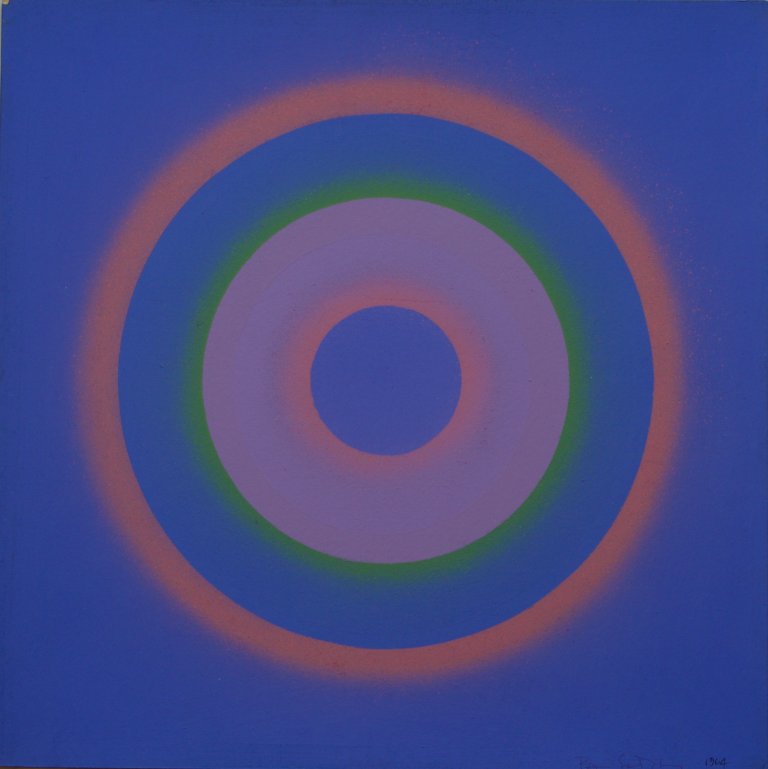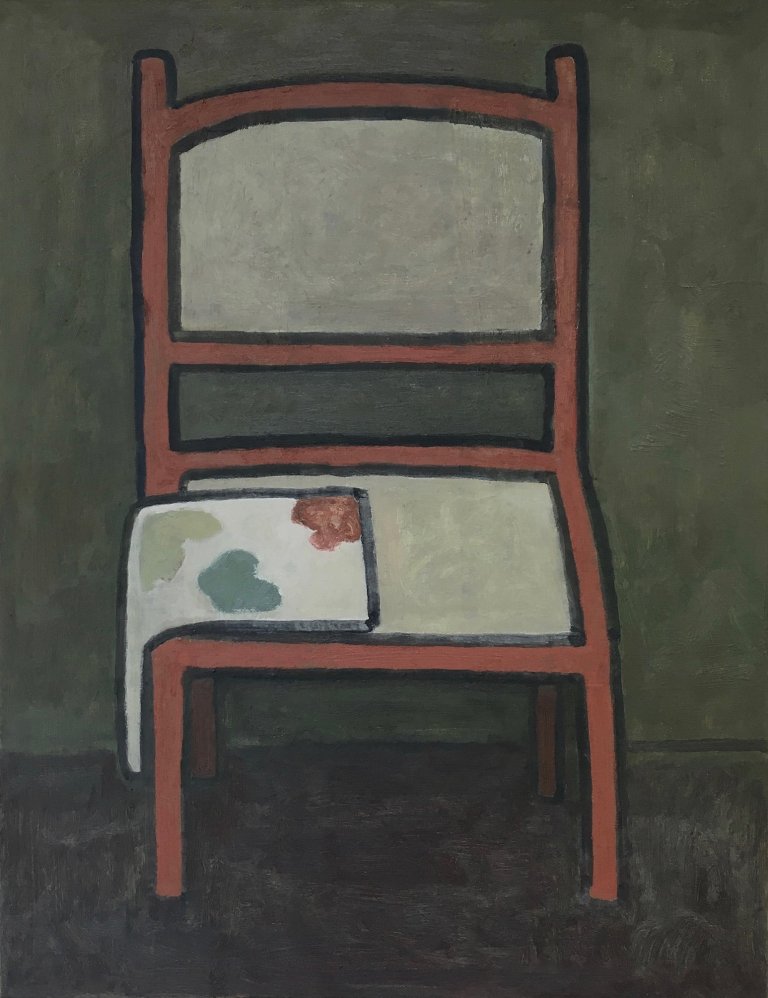
WILLIAM WRIGHT
19 October - 16 November
The idea of the artist’s studio as a private sanctuary is perhaps a romantic notion. A place to think and contemplate, even meditate. Through repeated routine and ritual, I strive to achieve something profound in the simplest terms. These images of a painter’s paraphernalia whether real or imagined are all essentially about this process. The mercurial act of making and the studio space as home to endless possibilities and encounters.
William Wright
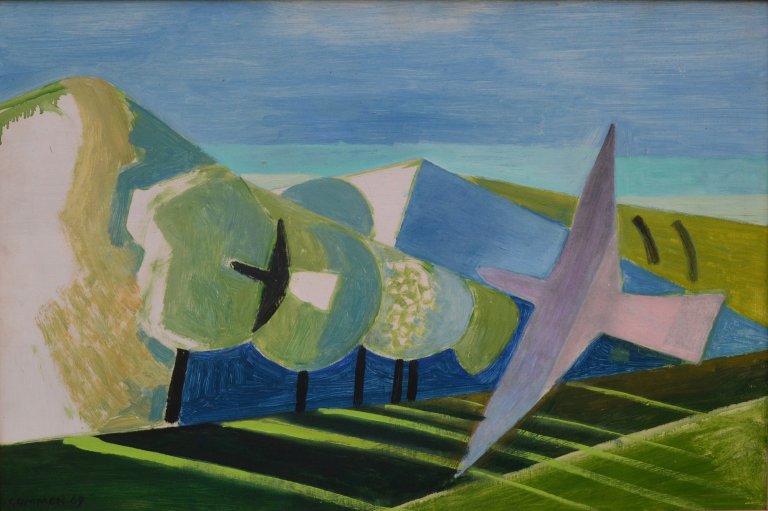
David Gommon (1913-87)
7 Sept - 5 Oct 2019
Until recently, the work of the artist David Gommon (1913-1987) was relatively unknown. However, a recent and an upcoming exhibition, both at The Art Stable in Child Okeford, give the wider public a chance to discover a sensitive and clever painter whose life and works mirror the development and movements within British Art in the first half of the Twentieth Century. This fresh and exciting body of works has emerged since the death of Gommon’s widow, and the retirement of his son, Peter. The works have a Romantic sensibility to them, with echoes of Paul Nash’s late landscapes, John Craxton’s undulating hills, Graham Sutherland’s eerie Surrealism, and with some of the bright colour palette of Christopher Wood. Gommon just missed Christopher Wood in life, but struck up a friendship with David Jones, “a gentle soul” who lived in one room in a small private hotel. He brushed past Graham Sutherland and Paul Nash, too, as he became acquainted with the arts commissioner of Shell, Col. Jack Beddington, for whom Nash and Sutherland worked, Nash producing the Shell Guide to Dorset. However, Gommon felt that art and advertising didn’t mix, focusing instead on Mayfair, turning, at the age of eighteen, into the welcoming arms of Lucy Wertheim. She supported the Twenties group of artists – Cedric Morris, Christopher Wood, Alfred Wallis et al – and Gommon was given a living by her of £2 a week, “plus all the paints I needed”. By her, he had his first exhibition, at the tender age of nineteen. Another supporter was Rex Nan Kivell of the influential Redfern Gallery, who bought some of his work. Born the year before the First World War broke out, David Gommon’s early childhood would have been inflected by war, his adulthood marred by a second conflagration. Gommon’s experiences were such that he believed that his art counted for nothing in the face of the suffering he saw. Once peace broke out, Gommon turned to teaching, only slowly returning to painting during the school holidays. However, having recommenced in 1945, he continued to explore and adapt artistically throughout the rest of his life. Gommon’s writing, rediscovered recently by his son, proves him to be as enchanting a writer as he was an artist. He describes early trips to Dorset, and the memory of a hut on Chesil Beach which he shared with a friend: “of lying on my camp bed at night listening to Chekov’s ‘Uncle Vanya’. It was a windy night and the hut swayed and lurched, rose from the ground, squeaked and returned to the earth with a shudder”. Gommon travelled widely, from the Isle of Wight and Holland with two Dutch students, to the lonely glens and lochs of Scotland and the Isle of Skye. However, he seems to have returned most frequently to Dorset, staying for a summer in the Blackmore Vale, “or as its old name has it, the Vale of the White Hart”. In a glorious link to the village that is now hosting an exhibition of David Gommon’s work, he wrote about the inhabitants and the environs in his journals: “Our favourite village was Childe Okeford, just below Hambledon Hill. We would climb Hambledon Hill and having walked round its ditches, and from the very top picked out all the landmarks like Alfred’s Tower in Somerset, we would then come down to the pub, the Baker’s Arms it was called. It had a visually interesting group of regulars who played skittles, shove halfpenny or Cribbage. Some of these activities carried on until midnight, and because closing time was at ten o’clock and to avoid the village policeman on the look out for law breakers, we all climbed out of a back window into the garden found our cycles, usually pushing them until we were safely distanced ...” What a pleasure, then, to be able to see his paintings in a landscape from which his inspiration sprung. Visitors to The Art Stable only have to turn a corner to see Hambledon Hill, and may be pleased to know that the Baker’s Arms is now open until midnight…
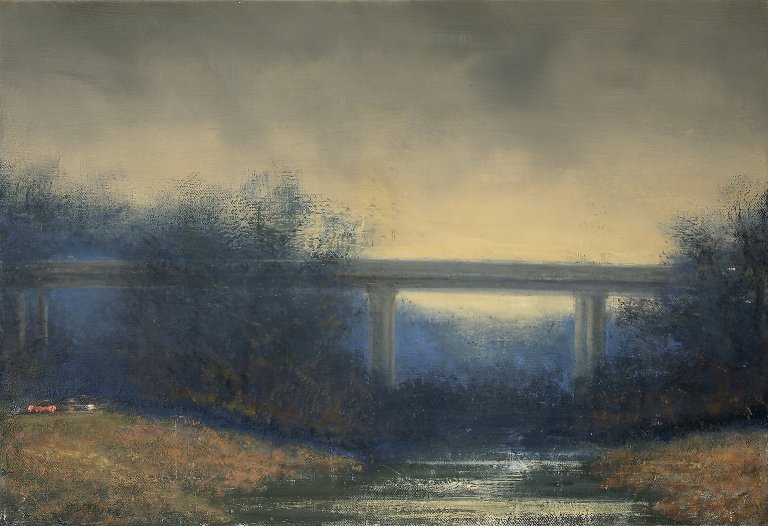
Peter Archer
8 June - 6 July 2019
It seems a nearly two decade long imaginative fascination of mine with the sea has run its course - more to the point it has been a fascination linked to my painting drive. Altogether a fruitfull relationship, giving rise to quite a few paintings and, at this point at least, to imagery that I doubt can be accessed again.
For quite long periods in the evolution of modern painting, in particular with the ascendancy of abstraction, the role of subject matter - especially that which 'looks like something' - has been downplayed. Now and for some time, attitudes to abstract values and imagery in painting have become more balanced, the necessity of an interplay between those forces and what can come out out that, widely acknowledged.
In this show there are several of the 'final' sea paintings. Whether they convey an elegiac mood I can't say - you will have to decide. Also being shown are recent paintings that have followed on and can be described as 'back to the land', but the land as it is now, with the sound of a busy road never too far away.
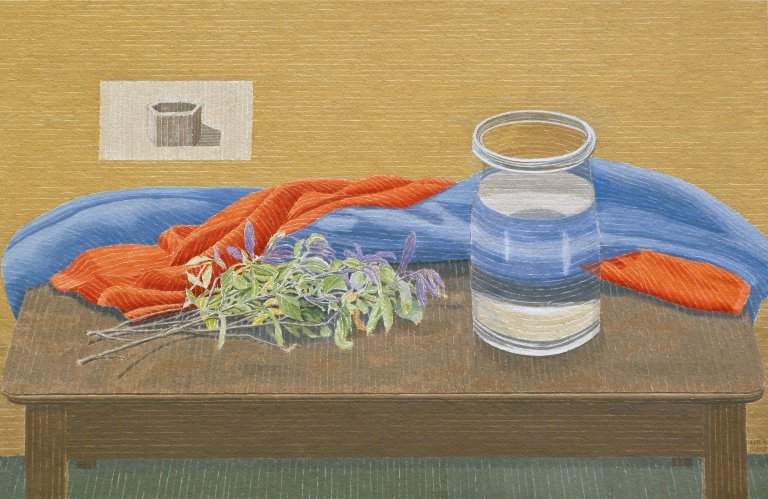
Michael Williams
27 April - 18 May, 2019
It’s almost exactly three years since I last exhibited at The Art Stable and the essential ambitions have not changed. I still paint landscapes and still lifes; and I had the idea then that the folds of fabric on a table suggested the folds of landscape. The three “High Lake” paintings, representing Llyn-y-Fan Fach, a lake high in the Black Mountain area of Carmarthenshire, came as an alternative to painting the sea. Instead of infinite recession here was a dramatically enclosed sheet of water, obviously formed by a glacier, with an unknown and mysterious depth and a steeped sided corrie around it, with striped, almost black, bands of rock. A wild place, three miles from the nearest car carrying road. The recent still lifes have seen a shift from watercolour to acrylic paint. The striations or ‘filaments of light’ are even more important, I think, in that they run through opaque colour: thin but often brilliant opaque colour so that the exchange between translucence and opacity is always taking place. And the very thin, often interrupted or embedded lines are now closer together so that a surface of folding fabric or intensely coloured wall has a kind of vibration or trembling running through it. These are paintings but they have some of the characteristics of a drawing or woven cloth. The drawings are both working drawings, working out which way the lines should go, and expressive images. There might be more trembling than in the paintings.
Michael Williams, March, 2019
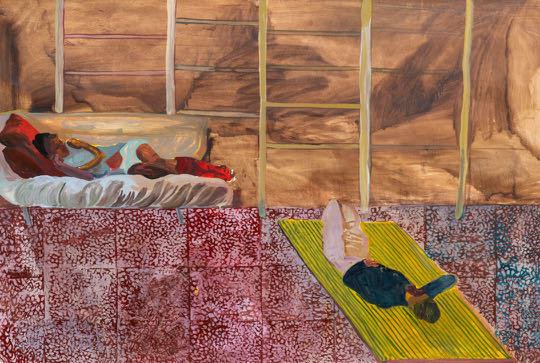
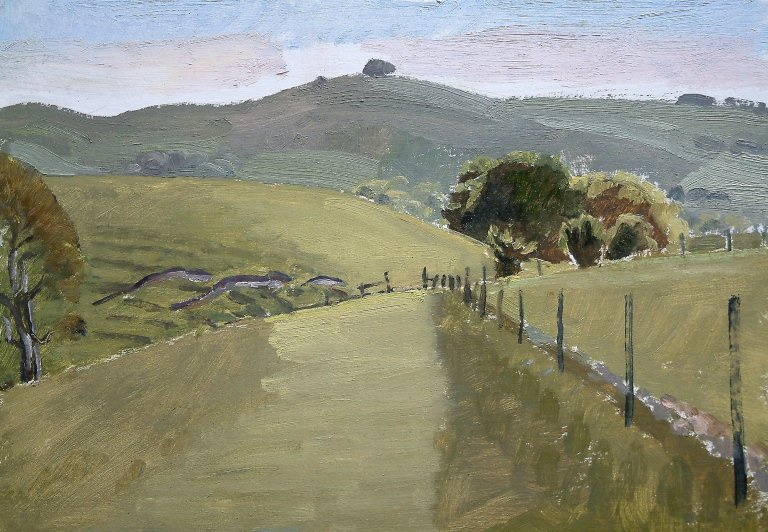
Christopher Riisager
Recent Paintings
9 February - 2 March 2019
Christopher Riisager has spent almost all his life on the Dorset/Wiltshire border aside from the years spent studying Fine Art at Goldsmiths during the 1980’s. He has a profound knowledge of, and relationship with, that landscape, developed through long, silent study. And yet, he finds that the most emotive landscapes are often those which reveal themselves in a moment of travel, or contemplation, where a movement of light or shadow can lead to a rediscovery of somewhere familiar.
The paintings in this exhibition were nearly all begun outside during the long, hot summer of 2018 and finished in the studio. They include paintings of Dorset and Wiltshire, inland around Melbury Down and Hambledon Hill, and coastal landscapes from Abbotsbury to Studland.
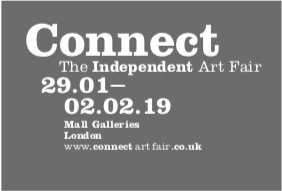
Connect Art Fair
Mall Galleries
The Mall
London W1
29 January - 2 February 2019
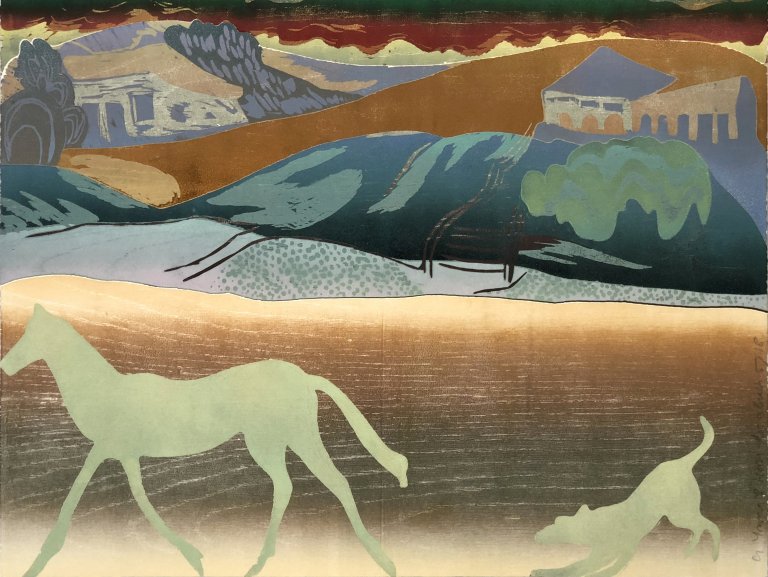
Christmas Exhibition
8 - 21 December 2018
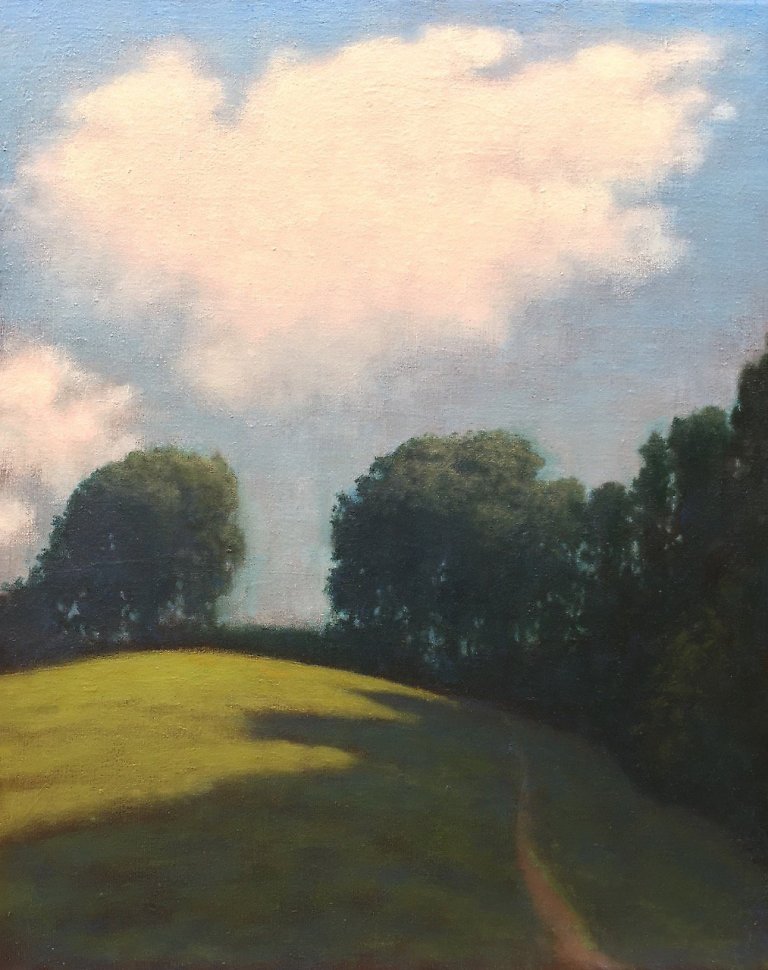
Tobit Roche
Trees and Clouds: Landscapes from an English Summer
10 November - 1 December 2018
There is something beautifully simple and symbolic about trees and clouds. They have the power, if we let them, to release and take us away from our stressful lives, almost like meditation. Both are key ingredients in the English landscape, and both take prominence in this exhibition. For many years I have been thrilled and inspired by the landscape oil sketches of Constable and William Nicholson, two very English painters, one from the early 19th century and the other working in the first half of the 20th. Both had the most exquisite touch and economy of means - the confident, inventive strokes and paint handling of true masters. I have tried often to emulate these two artists and take that as a starting point for the paintings in this exhibition. As the paintings are done en plein air, in front of the motif and in one sitting, and because of the restricted dimensions of my pochard paint box, the paintings are modest in scale. One also has to contend with blazing sunshine, fleeting rapidly changing skies, shadows and lighting conditions, as well as pallet rattling winds which will frustrate the steadiest of hands.
